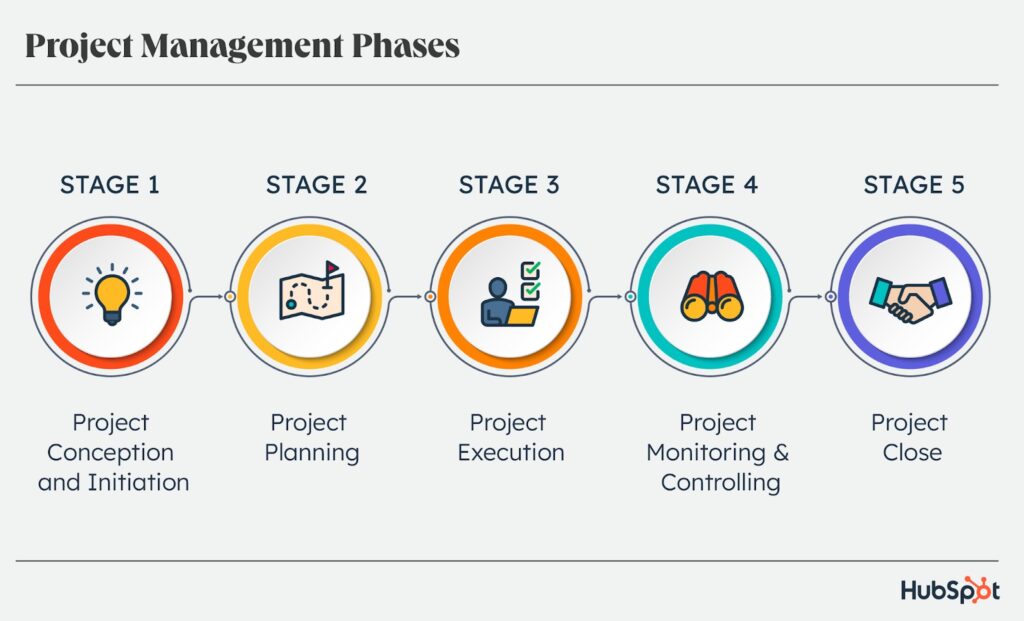What problems and obstacles do you face as a project manager? For many, scope creep, poor communication, and task delays top the list.
To state the obvious, project management can be tricky. Without careful planning and strategizing, it can feel like you're f working blind.
So, if you’re in a project management position, starting with the basics is your best bet. Here, we'll break down projects into five phases to help you better understand what needs to be done and when.
The Project Management Lifecycle
The Five Stages of Project Management
Stage 1: Project Conception and Initiation
Stage 4: Project Monitoring & Controlling
The future of project management is looking brighter than ever.
The Project Management Lifecycle
Regardless of size or scope, all projects follow a similar process. In project management, this process is called the lifecycle of a project.
A project lifecycle generally consists of four phases: initiation, planning, execution, and closure. Some project managers, however, add a fifth phase called monitoring and controlling.
The additional step can help managers keep the project on track and ensures that issues are identified and addressed promptly.
As a result, five-phase models are considered more agile and effective in helping projects succeed. In fact, the Project Management Institute (PMI) also promotes a five-phase lifecycle.
In the next section, we'll take a closer look at each stage in the project management lifecycle.
The Five Stages of Project Management
Every successful project goes through the same five phases: initiation, planning, execution, monitoring, and controlling.
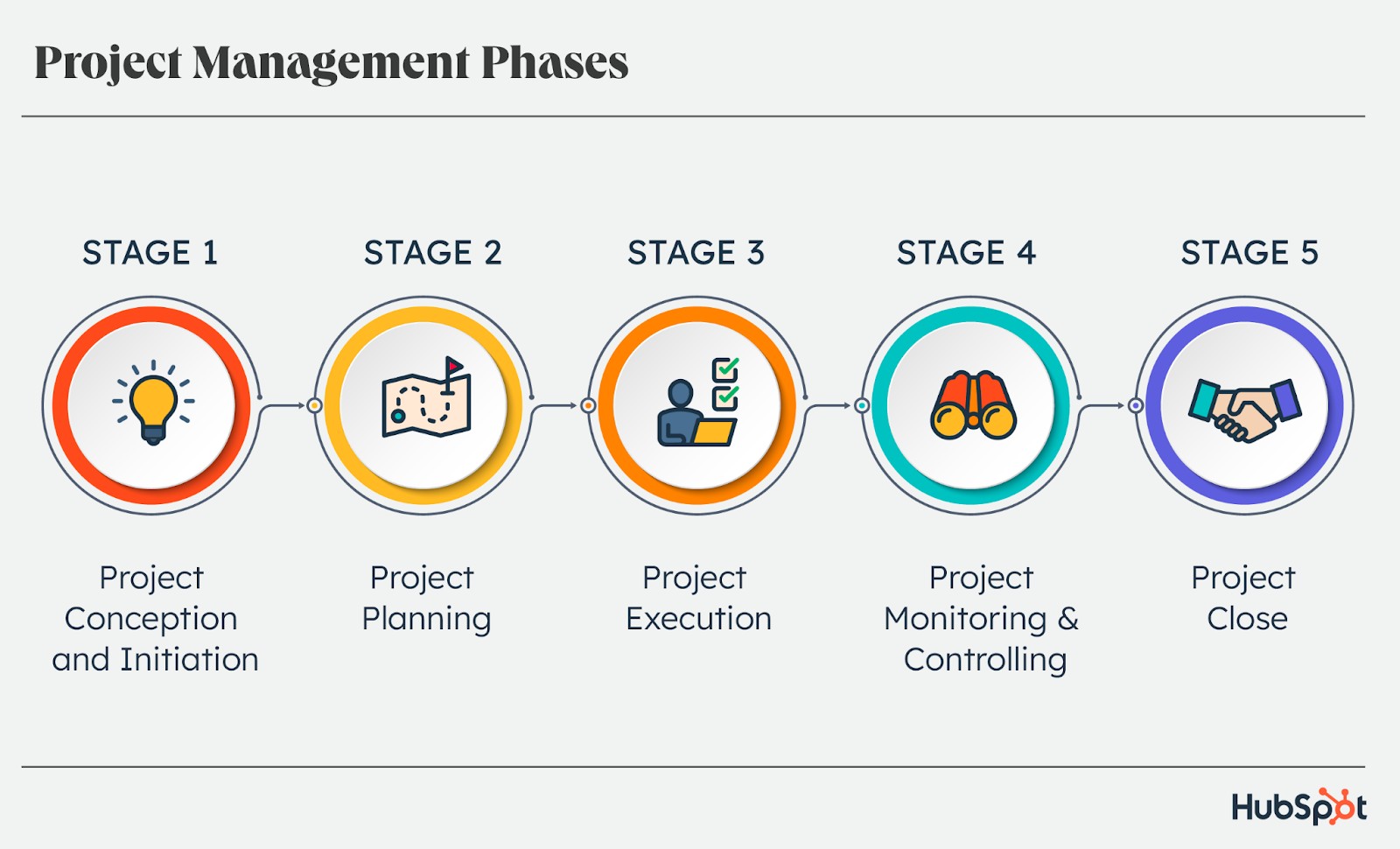
Stage 1: Project Conception and Initiation
Every project begins with conception and initiation. During this phase, an idea becomes a business plan, complete with goals, project charters, and stakeholders.
This is also when project teams come together—with the project manager—to build a broad roadmap for the project.
Teams should address a few questions at this stage, including:
-
What is the purpose of this project?
-
What are some potential obstacles?
-
Who are the key stakeholders?
-
Does it have a minimum or maximum budget?
-
How long will this project take?
As part of this phase, the project sponsor (the person who requested the completion of the project) approves the budget and timeline.
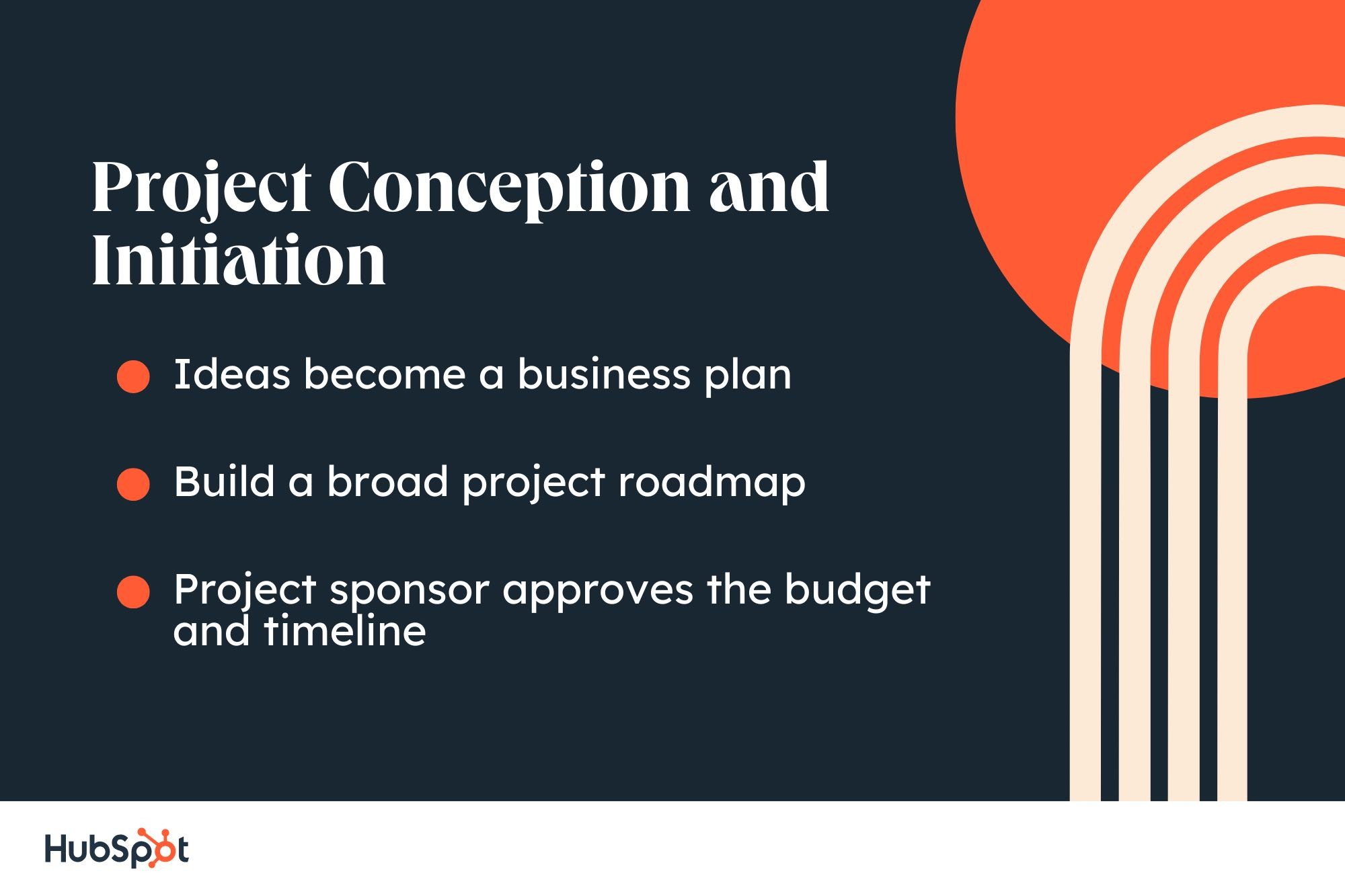
Stage 2: Project Planning
Once you've defined the project on a broader level, it's time to nail down the details.
During this phase, the project manager develops a detailed plan for executing, monitoring, and controlling the project. This typically starts with setting goals.
When defining the goals of a project, S.M.A.R.T. and CLEAR methodologies are the most popular.
The acronym S.M.A.R.T. stands for Specific, Measurable, Achievable, Realistic, and Timely. Using this framework ensures your goals are clearly defined, realistic, and achievable.
Let's look at an example. A vague goal might be, "Develop an app that streamlines order fulfillment." Using the S.M.A.R.T method, this goal would look something like, "Develop an application that reduces order fulfillment time by 20%."
The acronym C.L.E.A.R. stands for Collaborative, Limited, Emotional, Acceptable, and Refined.
In this methodology, the project team works towards a goal that is specific and achievable within the project deadline and budget. Everyone should be passionate about achieving it, and it should relate to the overall project objectives.
The plan should also include milestones and deliverables so that everyone knows what needs to be done, who handles what, and when milestones must be completed. It also includes a breakdown of tasks, a timeline, a communication plan, a risk mitigation strategy, and a plan to deal with worst-case scenarios.
There are several ideologies you can employ to plan for this stage. By using agile project management, development resources are effectively used, and client needs are met.
As well as keeping everyone up-to-date on progress, it allows for quick and easy changes to be made. Agile project management makes it possible to manage software development projects more effectively and efficiently.
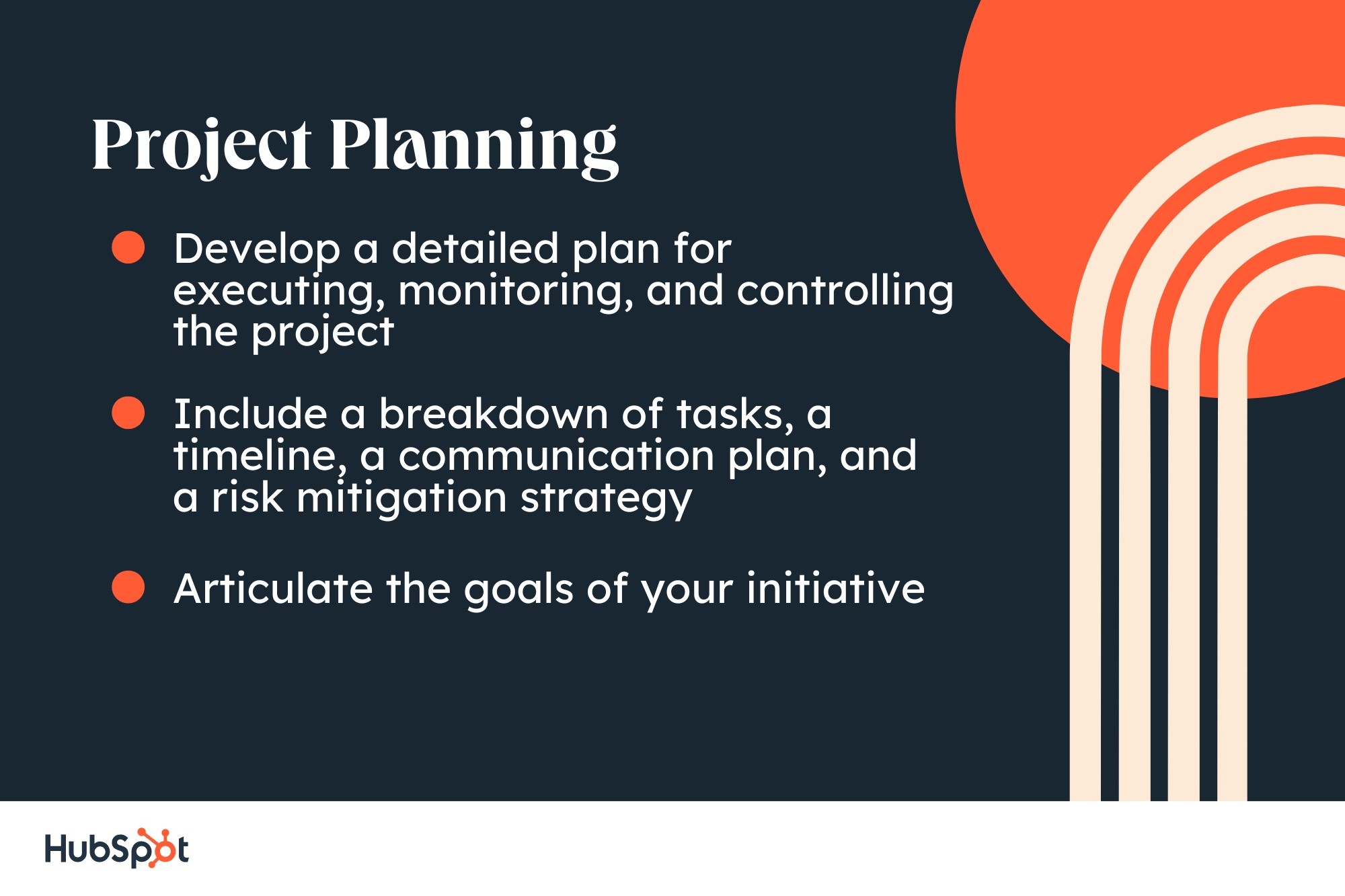
Stage 3: Project Execution
As soon as the planning phase is complete, it's time to start implementing the plan. It's here that the actual work gets done.
During this stage, project managers establish workflows, assign tasks to team members, and ensure that everyone is on track. They also keep stakeholders and teams in the loop as the project progresses.
With so many details to juggle, many project managers leverage collaboration tools like Asana, Trello, and HubSpot's Project Management Software to track tasks, timelines, and budgets in one central location.

A well-designed project management tool will keep you on track and help you accomplish your goals. For a list of the best project management software, check out this helpful guide.
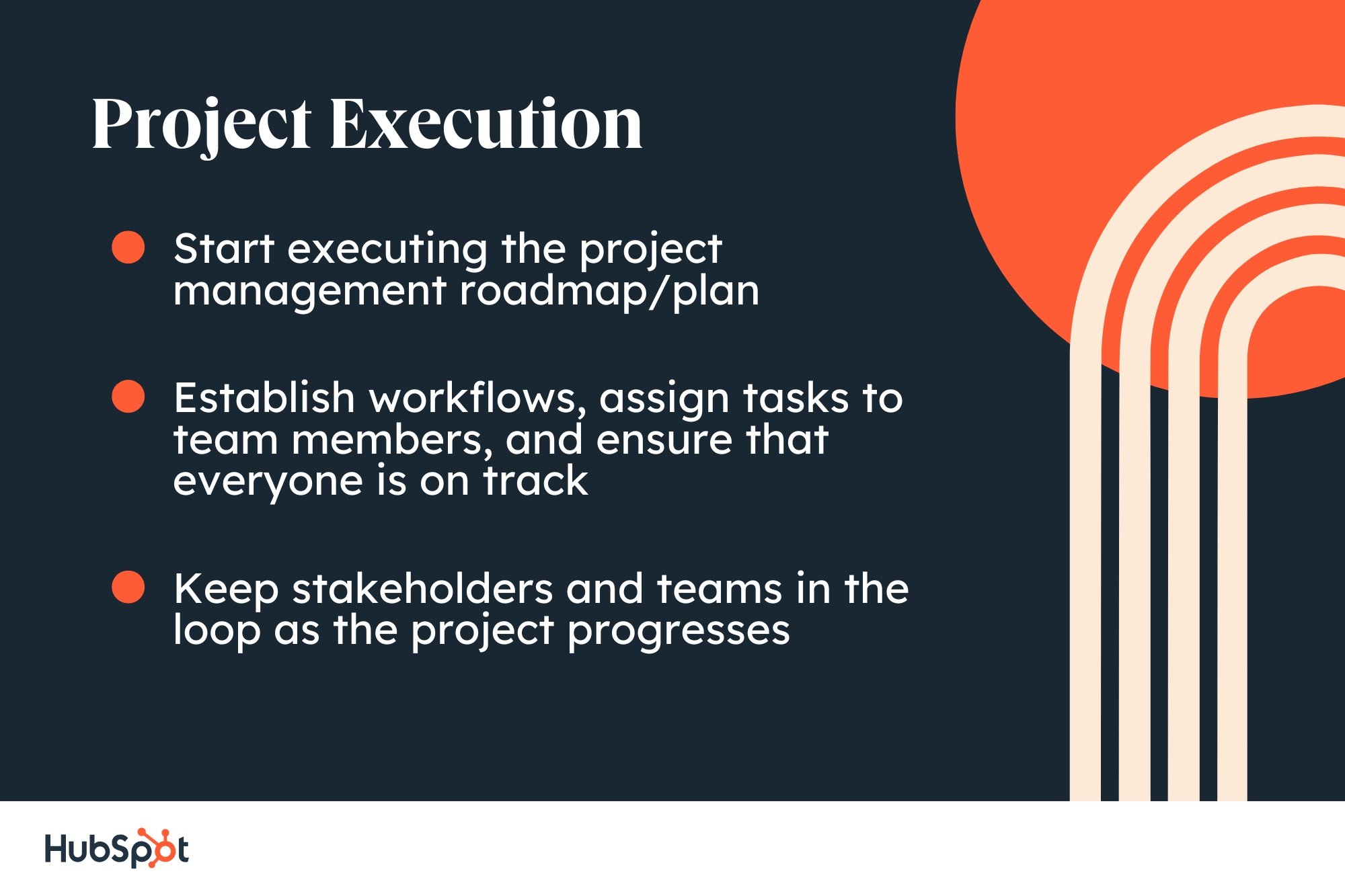
Stage 4: Project Monitoring & Controlling
Stage four usually runs concurrently with Stage three. After all, in order to monitor a project, it has to be running in the first place.
During this phase, the project manager works with their team to resolve any issues. This involves periodic reviews and updates of the plan to reflect changes in the scope of the project or in the availability of resources.
It's also important to monitor progress against the plan and take corrective action when necessary. For instance, it may be necessary to revise the timeline to accommodate for unexpected delays or changes.
On top of that, project managers can monitor progress against key performance indicators (KPIs) or critical success factors (CSFs). For instance, you can measure if your project is on schedule and budget or if specific tasks are being completed.
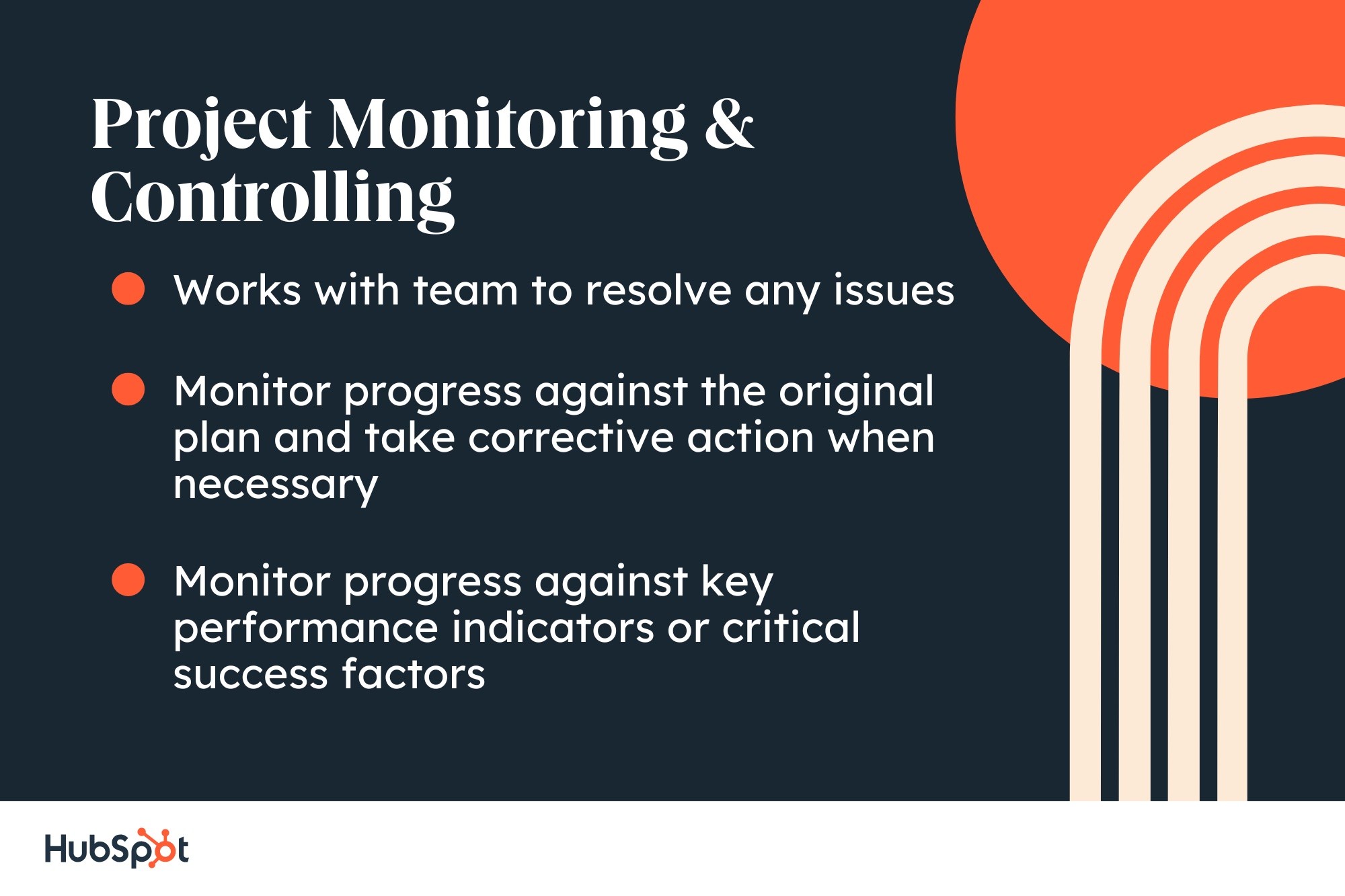
Stage 5: Project Close
This is the last phase of the project management lifecycle. This is when you hand over the deliverables to the project sponsor for approval. During this phase, the team disbands and any contractual hires for the project will be terminated.
After closure, the project manager conducts a final review that documents the lessons learned from the project, as well as any necessary data that can be useful in the future.
Team members and stakeholders also discuss failures and successes during the presentation of the report. This helps to improve performance and productivity across the organization.
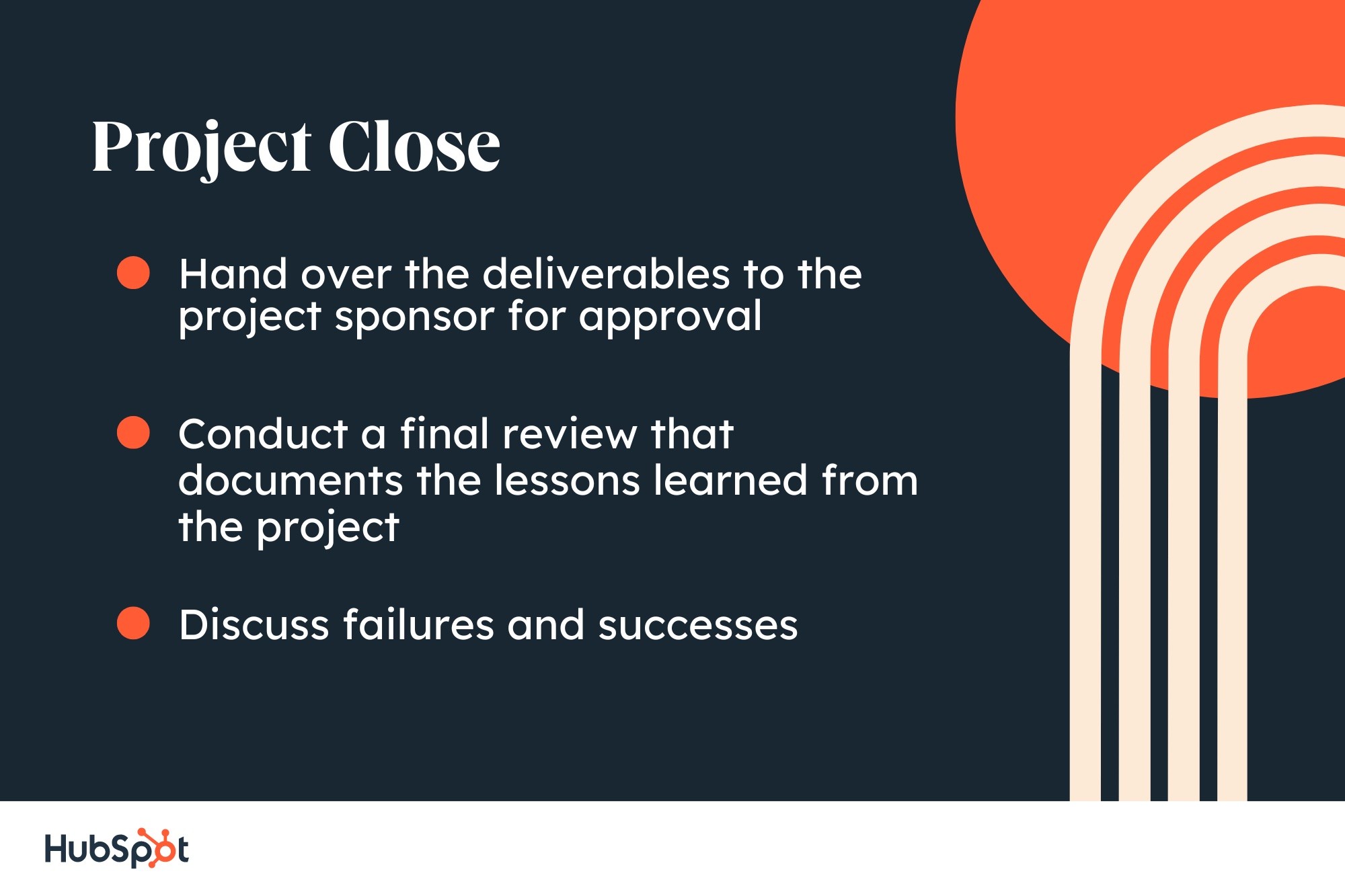
The future of project management is looking brighter than ever
Traditionally, project management was done with pen and paper or, at best, a spreadsheet. Because of the complexity of projects and the dispersion of the workforce, these methods have become ineffective.
Keeping track of progress and meeting deadlines requires a digital-first approach. HubSpot's project management software is one tool that can definitely help with project management.
With this software, teams can streamline their workflows, track their progress, share documents, and manage their tasks.
On top of that, the HubSpot CRM platform enables you to easily integrate it with your other sales and marketing tools. This makes it easy to keep track of progress and ensures that everyone is on the same page.
Additionally, the software provides users with real-time insights into their workflows, enabling them to identify bottlenecks and adjust accordingly.
So, if you’ve been looking for ways to level up your project management, here’s your chance. Grab your project management template below to keep track of your team’s progress and streamline your workflows to increase efficiency.

